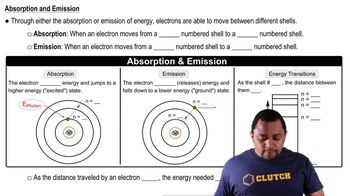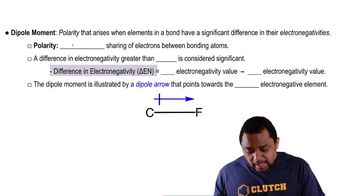Cyclooctatetraene dianion, C8H82-, is an organic ion with the structure shown. Considering only the p bonds and not the s bonds, cyclooctatetraene dianion can be described by the following energy diagrams of its p molecular orbitals:
(a) What is the hybridization of the 8 carbon atoms?




